Dahlias are very beautiful plants in the aster family. Compared with other garden flowers, they have several advantages associated with a long flowering period, a large tint palette, a variety of sizes and shapes. Since the plant came to Eurasia from South America, where the climate is much warmer, gardeners are often interested when dig dahlias in autumn and what you need for their wintering.
Content
Growing Features
Dahlia is a thermophilic culture, especially the cold is carried by its root system. If you leave the plant in the ground, then it will die from frost, so the flower should be wintered indoors. It remains to be found out how to dig dahlias for the winter and where the plant can most reliably wait out the cold.
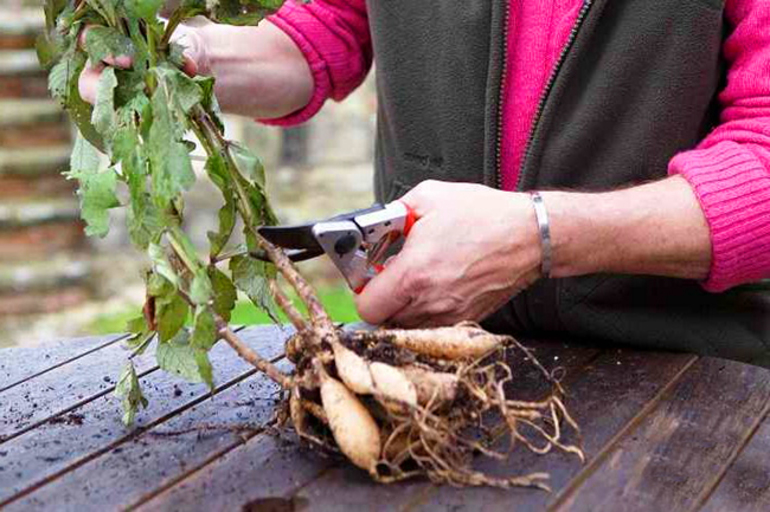
One of the brightest and most beautiful flowers in the garden is rightly called a dahlia. It has a long flowering period, which is a huge advantage of the plant. Dahlia begins to bloom in mid-July and continues to delight its owners until the first night of autumn frost.
Varieties of Dahlias
The plant was brought to Europe from Mexico at the end of the 18th century, and got its name only in 1803. The botanist C. Wildenau named it in honor of the Russian biologist, geographer, ethnographer and academician I. Georgi. Currently, 13 species and about 15 thousand varieties of flower are known. The most popular of them are:
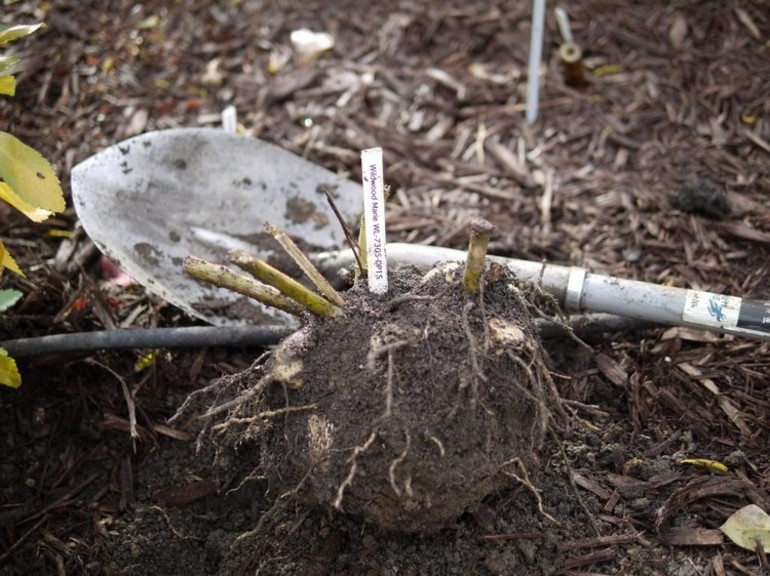
- Simple dahlia. A low bush with flowers up to 10 cm in diameter; the petals are arranged in a row around the core. Color varies from yellow to orange-red.
- Collar. Large bush with large flowers, reaching 1 m 20 cm in height. It has two different rows of petals.
- Pion-shaped. It has huge buds, which after opening form a circle with a diameter of 12-15 cm.
- Anemone. It is distinguished by lush flowers not exceeding 10 cm in diameter.
- Decorative. The size of its head varies from 9 to 25 cm, the color is yellow, orange and purple.
- Globular. It has round flowers of yellow, peach and reddish hue.
- Cactus. A plant with pointed edge petals of pink and reddish color and large buds reaching a diameter of 24 cm when opened.
- Semi-cactus. Inflorescences are from 9 to 25 cm and are located on a tall bush. The marginal petals are tucked from the middle to the tips.
- Pompom. A flower of lavender or light purple hue, having a rounded shape and a small head size.
- Nymphaeum. The shape of a flower bud resembles a light pink, lilac or snow-white lily growing in water.
- Mixed species. The most diverse subgroup of plants, including varieties that do not fit the description of any of these groups.
Despite the abundance of plants, breeders have long been trying to solve the difficult problem and get a blue dahlia, which so far remains only a dream. Also, the problem is not solved whether it is necessary to dig dahlias for the winter and whether it is necessary to preserve the tubers.
The time of digging bushes
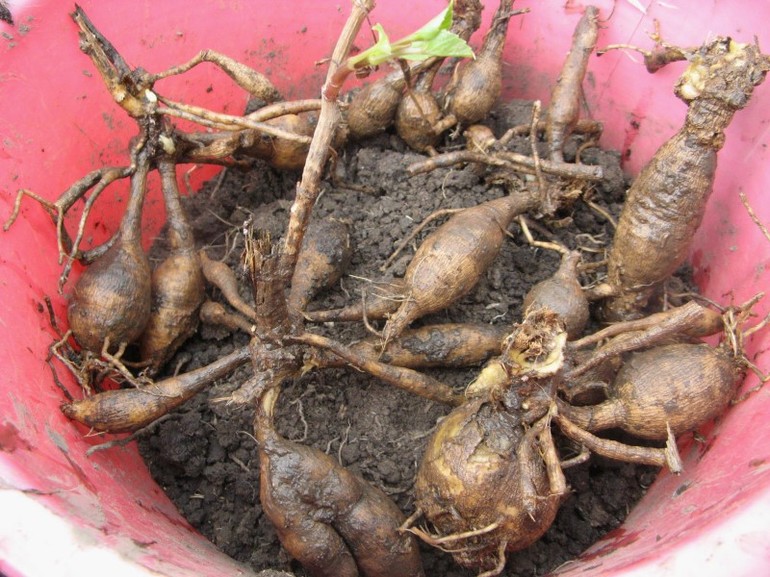
Dahlia is a perennial plant, but this does not mean that if you plant it once in the spring, it will flower and develop over several years. Although the flower is very unpretentious, it has one weak spot - the root system, dying from frost.In order to protect the tubers of this relative of the aster, it is necessary to have knowledge when and how to dig dahlias for the winter.
It is very important to determine the time of extracting the plant from the ground, since if this is done early, the tuber will not have time to gain strength and save it in winter will be harder. If you miss the right moment and start the procedure later, then the roots may freeze and die.
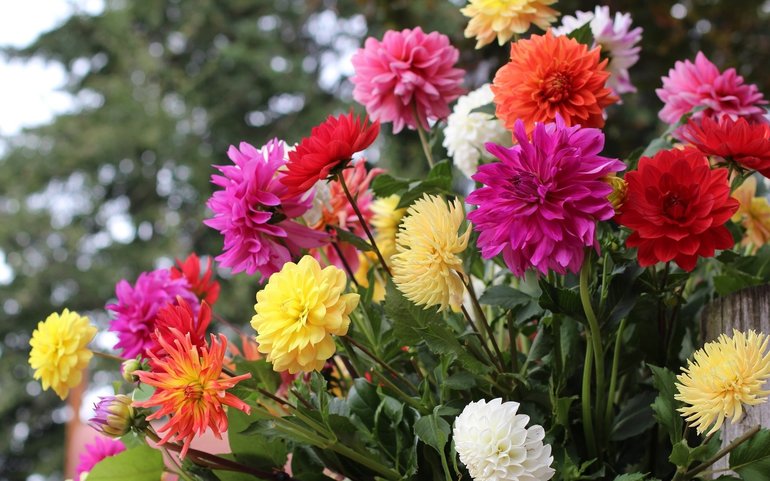
Rhizome growth begins after planting in the spring, and ends in the fall after flowering. Dried and sluggish tops signals the time has come to think about how to remove dahlias for the winter. Given the climate for each individual area, there is an optimal time, when to dig bushes:
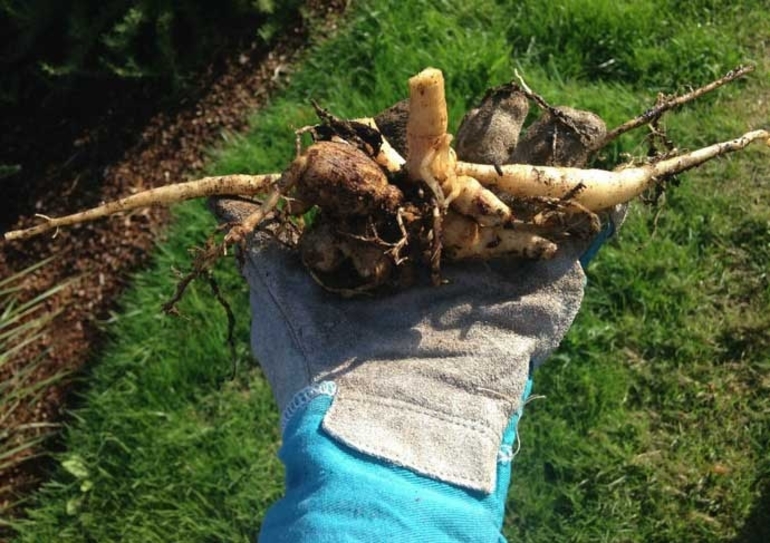
- Moscow region and the middle zone of Russia. The plant is extracted in the first half of October, making adjustments related to weather conditions.
- In the Urals digging dahlias in the fall produced at the end of September. But you need to remember that if the frost comes suddenly and grabs the root system, then the rotted root can activate the buds of growth, as a result of which the plant can no longer be saved. With a sharp onset of frost, a dahlia must be dug up within three days.
- In Siberia, a short summer, contributing to the cultivation of special varieties that completely bloom in a month. The first ones usually dig up specimens with dark flowers, and the last gets plant material with an annual root. If the autumn is warm, the best time for the digging procedure is the end of September, when early autumn comes, it is best to clean dahlias for the winter in mid-September.
- In Belarus, the climate zone is reminiscent of weather conditions in central Russia, so it is best to harvest tubers for the winter from October 1 to October 15.
Many gardeners prefer to dig out rhizomes, referring to the lunar calendar. They argue that this improves the safety of future planting material.
Plant Extraction Rules

In the autumn after the first night frosts, when the dahlia flower looks wilted and darkened, it's time to extract the rhizome from the ground. First of all, you need to select weak, sick or ugly specimens and remove them. Then you should burn the diseased seed material along with the ground to prevent infection of other plants.
When digging a flower from the ground with a shovel, operations are carried out with caution, given the size of the root. You can determine it by the size of the bush. The more magnificent it is, the larger the root system. Some gardeners believe that using a rake for such work is more acceptable, since it is easier to save tubers with their help. The darkened stems are trimmed at a distance of about 20 cm.
First, the procedure needs to be dug around the bush, after which you should pry the plant with a shovel or rake from below and, being careful, pull it out of the ground. In no case should you drag the plant by the tops. This can lead to damage to the root in the neck and further rotting of the tuber.
After digging up the plants, you must definitely shake off the ground. The tubers must be allowed to dry, leaving them in the garden in the fresh air. Later, the dahlia is thoroughly washed with running water while shortening the stems by 10 cm. The stuck lumps of the earth can lead to the development of viral diseases and rotting of planting material.
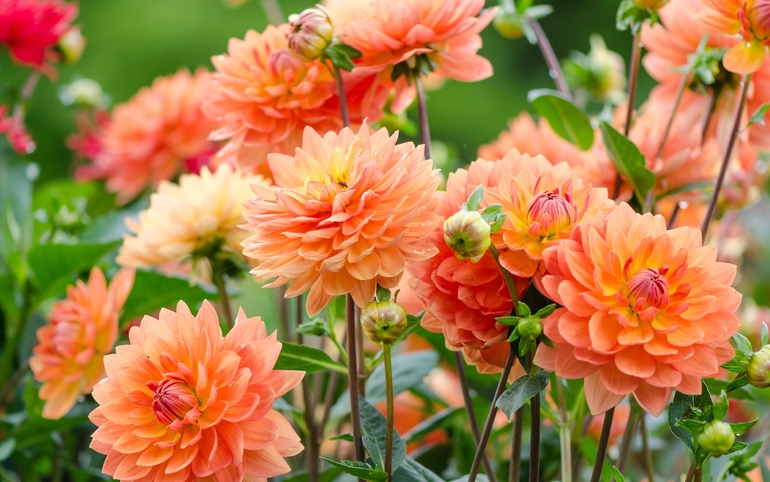
For processing, the rhizome is placed in a container with a disinfectant solution for half an hour. For this, the drug Maxim is best suited. Dahlias are then left to dry in a well-blown, shaded area.
Storage preparation
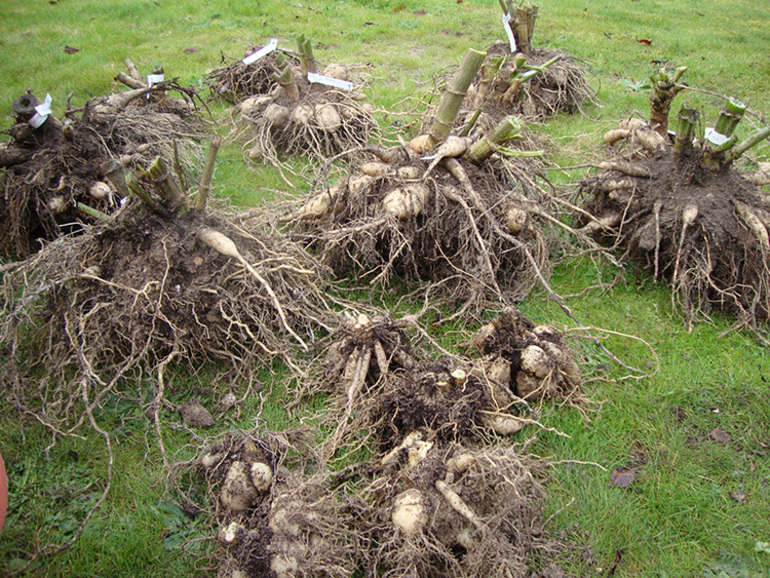
All planting material is supplied with tags with the name of the variety or a brief description of the external characteristics. After the roots have dried, they are transferred to the room and begin the process of preparation for the wintering. First you need to separate the potatoes, as large nests are poorly stored. Parent tuber, damaged or ugly roots are removed, stems are cut short. In order for a new dahlia to appear from the shoot in the spring, root basal necks with kidneys must be preserved on all the divisions.
To divide the rhizome into parts, use a knife previously calcined over a fire. In order not to transfer the pathogenic flora from one plant to another, it is advisable to use a sterile tool for cutting each individual nest (you can prepare several processed knives in advance).
Cutting and inspecting the material, at the same time reject the processes with a faded basal neck, indicating rotting of the entire tuber. Then, the process of cutting rotted tissue to a healthy pulp is carried out. Potatoes with small holes are put into storage, as traces of damage by insects do not pose a serious danger.
The separated roots are washed, and the sections are treated with fungicide or sulfur., sometimes use an alcoholic solution of brilliant green. After the formation of a small crust at the cut site, the prepared planting material is packaged for storage.
There is still debate about the need to divide rhizomes into tubers. There is an opinion that dahlia delenki can dry out faster and die during the winter before spring planting. Opponents of this argument argue that fractional roots are less susceptible to decay, and the thin crust formed on the slices perfectly protects them from drying out.
Fillers for wintering tubers
Carefully prepared and dried tubers are usually stored in plastic bags or crates, or a cardboard box can also be used. To improve the safety of delenok, roots are usually poured. As a material for this purpose, you can use:
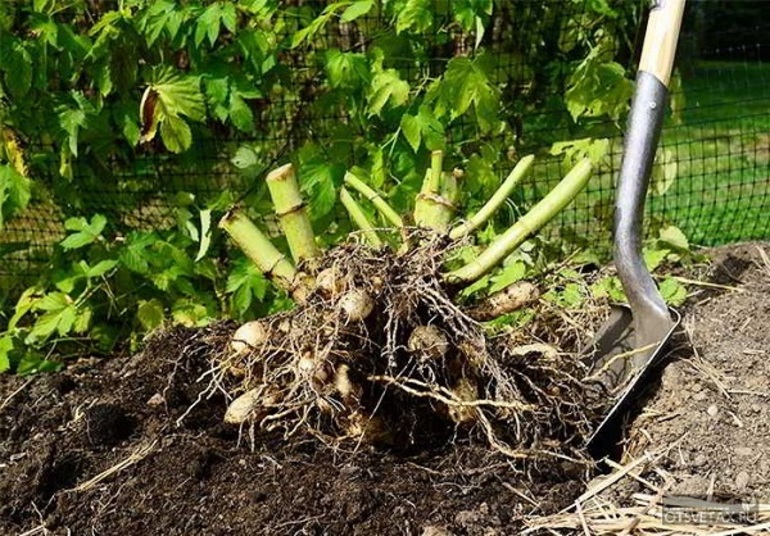
- Vermiculite - granules intended for storage of dahlias in rooms with low humidity, as the material perfectly absorbs and retains moisture. Use it for pouring delenki placed in a bag or box. To prevent the drying of tubers, it is recommended to occasionally lightly spray the surface of the embedded substrates.
- Sawdust. A prerequisite is the small size of wood waste, large pieces of wood can greatly dehydrate flower sprouts.
- Perlite is a material with its characteristics resembling vermiculite, but is more suitable for retaining moisture in the root. When working with this filler, care must be taken, since small particles have harmful and dangerous properties for the human body. When working with it, it is necessary to protect the respiratory system.
- Horse peat is an easily accessible filler; you can buy it in any specialized store. Tubers prepared for storage are laid out in one layer at the bottom of the box and they are covered with peat, making sure that the neck is covered with a small layer of substrate. To maintain the moisture content of peat, it is recommended to lightly spray it in the winter.
- The most inappropriate material for dahlias is moss. In the wet state, it can lead to decay of the processes, and in the dry it is able to dry the delenki prepared for storage.
The main condition for reliable preservation of the roots is to ensure air humidity and compliance with the temperature regime. The storage temperature of garden material should be in the range from +1 to +7 ° C.
Bulb storage locations
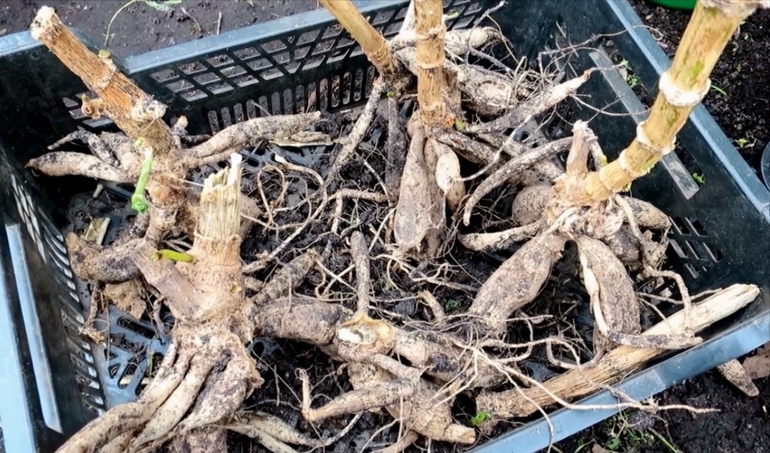
A small amount of bulbs can quite successfully winter in the refrigerator. To do this, the roots are placed in a plastic bag with small holes or perforations and covered with sawdust.Every two weeks, an inspection of the planting material should be carried out, rotted rhizomes should be selected and corrupted places cut out.
Holders of a large collection of dahlias have the opportunity to keep products in the cellar or basement. In some cases, utility rooms and a subfloor are used. Another great place for flowers is a balcony or loggia. In case of frost, the boxes are carefully wrapped in old blankets or warm clothes.
Melted Paraffin Method
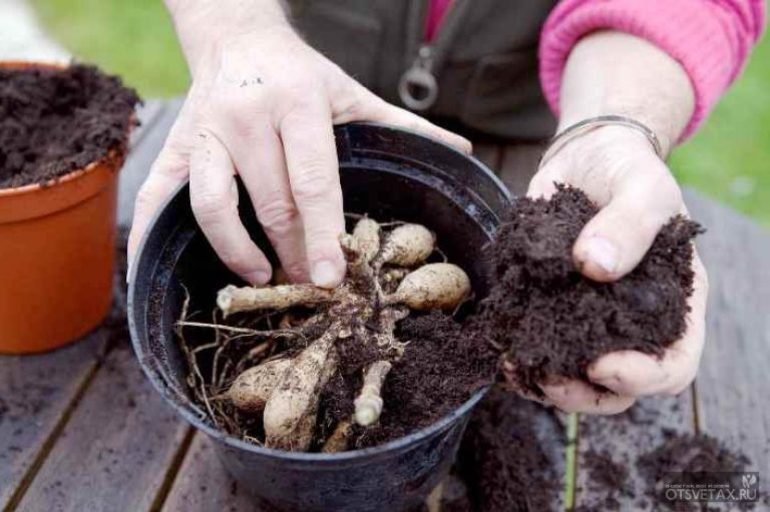
In a warm paraffin melted in a steam bath, a tuber prepared in advance is dipped quickly. In order not to cook the rhizome, it is immersed for just a few seconds. After the formation of a thin crust, the root is deployed at the other end and the procedure is repeated. After processing, the roots are placed in a container with sawdust, for this purpose a plastic bag is better. Keep the package tied.
The care and diligence invested in the proper preparation of planting material for the winter will pay off handsomely in the next horticultural season, when lush dahlia bushes are covered with beautiful buds in the garden and will delight the eye and heart with a long flowering.

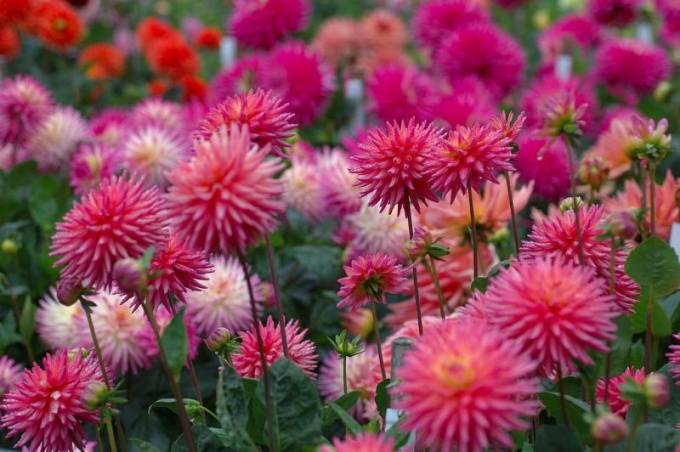

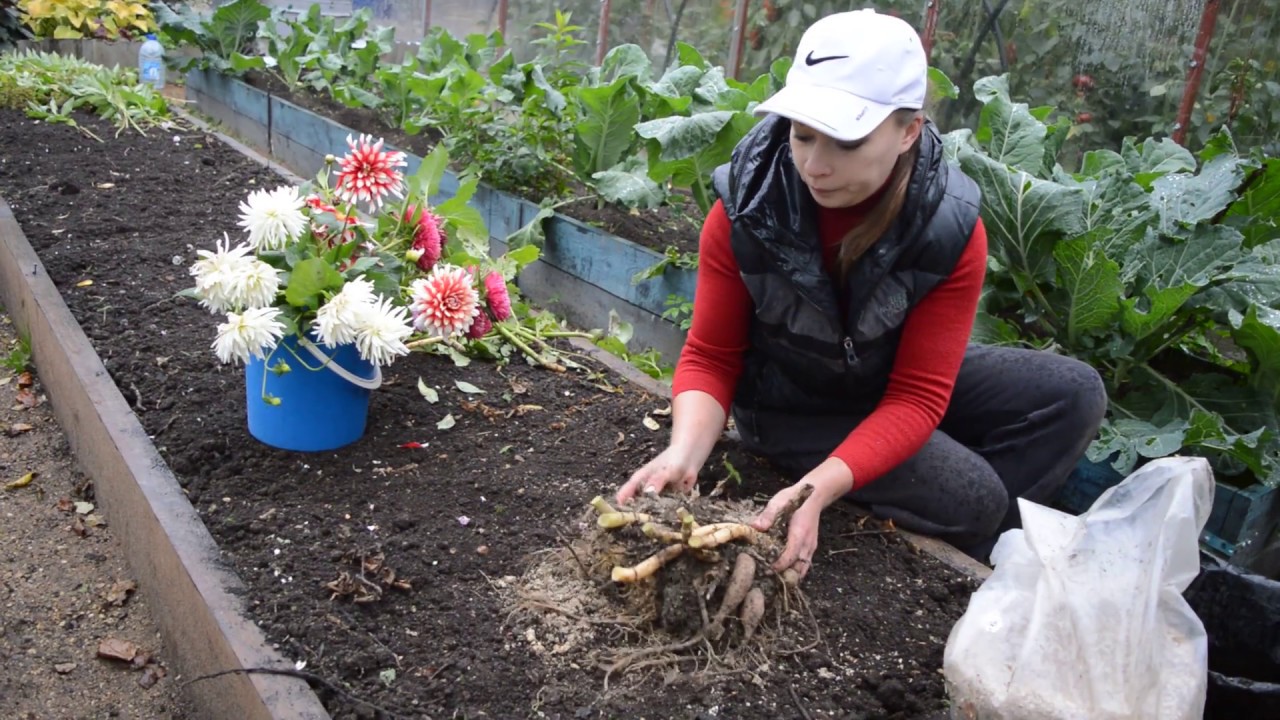
 When to plant annual dahlias for seedlings according to the lunar calendar in 2018
When to plant annual dahlias for seedlings according to the lunar calendar in 2018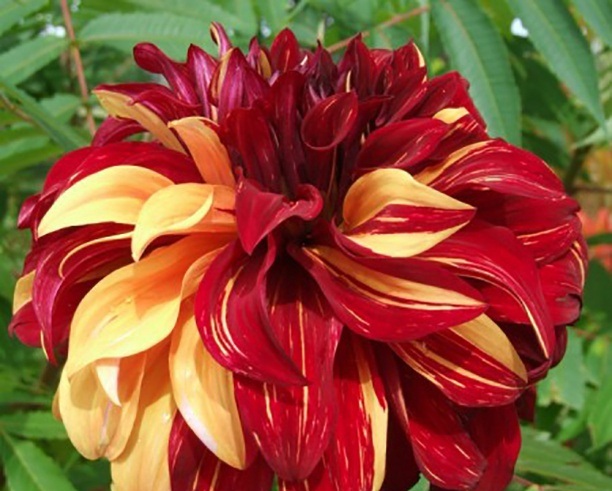 Description of the decorative dahlia "Bohemian Spartacus"
Description of the decorative dahlia "Bohemian Spartacus"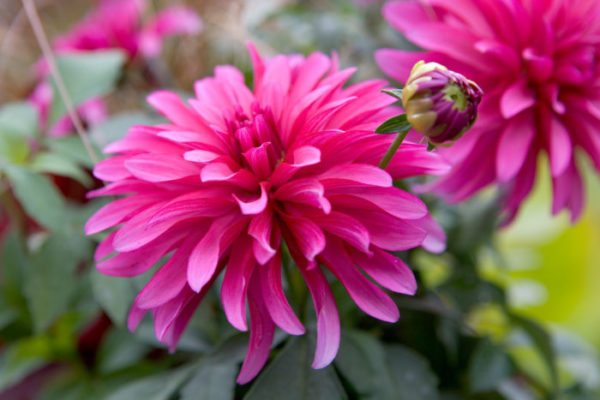 Dahlia Gallery: description of varieties, photo
Dahlia Gallery: description of varieties, photo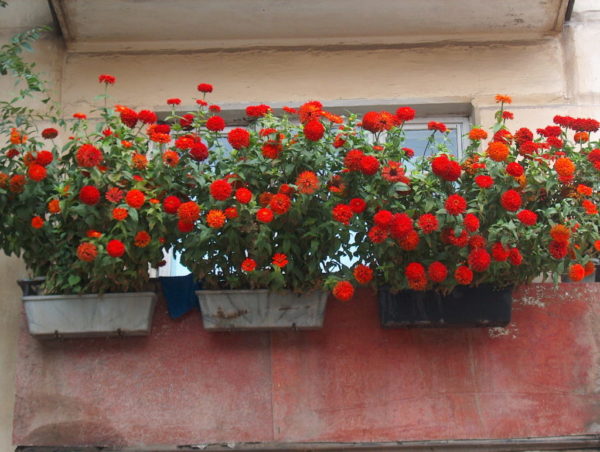 Planting and care of dahlias in pots and on the balcony (photo)
Planting and care of dahlias in pots and on the balcony (photo)